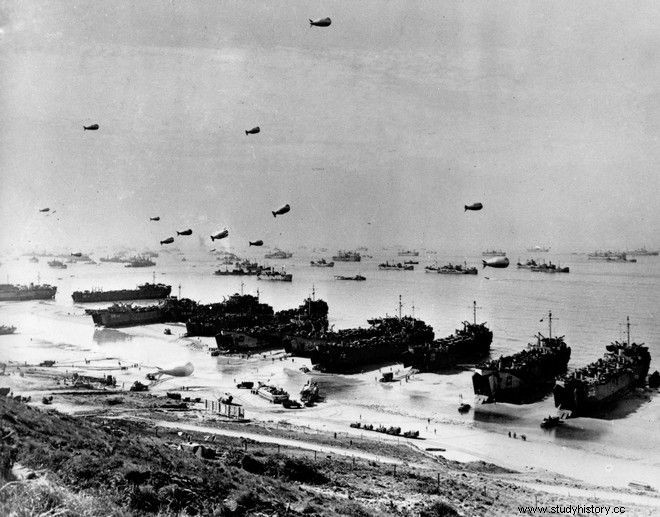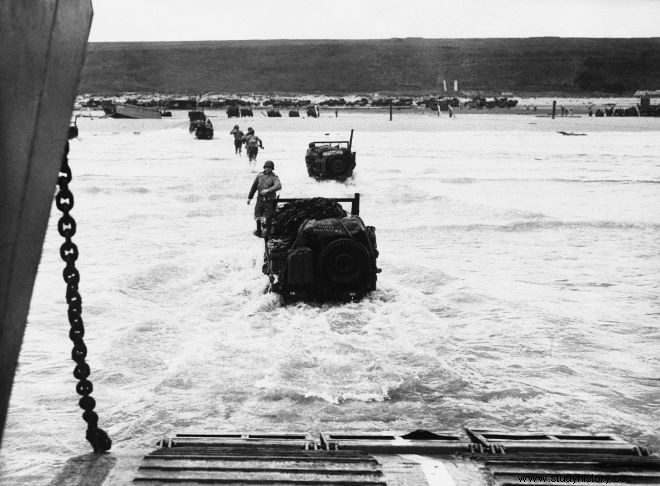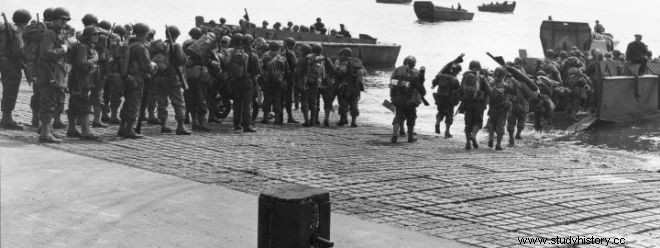On the cloudy morning of June 6, 1944, the largest military operation of World War II and the largest amphibious operation in military history took place, the Normandy landings, or D-Day, as it went down in history. It was a critical blow against Nazi Germany and, as historians agree, one of the deciding points in the outcome of the war.
Preparation for the Normandy Landings
The Allies' disagreements over whether to push from south to north or to land across the Channel in order to defeat Germany were resolved at the Teheran Conference (28 November - 1 December 1943). Stalin, backed by the US, insisted that invading France was the only way to defeat Germany.
In January 1944, as sansimera reports, preparations for Operation Overlord began. US General Dwight Eisenhower was appointed supreme commander, with British commanders in the army, navy and air force. According to the plan, the attack would take place on a narrow front in Normandy, on the northern coast of France, by five army corps. To carry it out, Eisenhower had to assemble the largest fleet in history that ever attempted a landing. If successful, the landing would be the start of a major Allied advance eastward through France, straight into the heart of Nazi Germany.

The main concern for the planners of the operation was that the Germans would not find out the landing point. Thus, their forces would be forced to deploy along the entire coastline. Moreover, a deception plan had been drawn up, Operation Bodyguard, which succeeded beyond all expectations in convincing Hitler that the main target was the area of Calais, much further north of Normandy. Although there were 58 German divisions in France, only 14 were on the Normandy coast. Of great importance was the utilization of the air superiority of the Allies, in order to neutralize the enemy air force and to isolate the transport network of Northern France.
While the plans for the landing were drawn up by American and British military personnel in England, German Marshal Erwin Rommel - known as the "Desert Fox" from his previous service on the African front - tasked with intercepting the expected landing, strengthened the German defensive fortifications along the coast of France with underwater obstacles, fuel tanks, bombproof, as well as minefields. Its main problem was that it had to patrol 3,000 miles of western European coast, from the Netherlands to the Italian border.

The Landing
The landing in northern France from England was finally scheduled for 5 June 1944, but was postponed for twenty-four hours due to bad weather in the English Channel. A huge fleet was assembled, led by English Admiral Bertram Ramsay, which included 1,200 warships, 10,000 aircraft, 4,126 landing craft, 804 transport ships and hundreds of armored amphibious and other missions. 156,000 men (73,000 Americans and 83,000 British-Canadians) would land in Normandy, of whom 132,000 would be transported by Channel ships and 23,500 by aeroplanes. The land forces were commanded by the English General Bernard Montgomery, who had opposite him an old acquaintance from the operations in Africa, the German Marshal Erwin Rommel.

The landings, codenamed "Operation Neptune" began before dawn on June 6 on five beaches along Normandy, codenamed Utah, Omaha, Gold, Juno (Hera) and Sword (Sword). The beaches chosen for the landing stretched from the Gulf of Orne to the southwestern tip of the Cotantin peninsula. On the eve of the operation, British commando units had fallen behind enemy lines, capturing key bridges and disabling German communications.
The four coasts were easily and quickly occupied by the Allied forces, while on the fifth, "Omaha", they faced fierce German resistance. By nightfall large bridgeheads had already been established in all five landing areas and the final operation to crush Germany had begun.
For the success of the landing, the air superiority of the Allies was decisive. Their planes destroyed most of the bridges over the Seine in the east and the Loire in the south, thus preventing the Germans from reinforcing their advanced units in time on the bridgeheads on the Normandy coast.

The Allies at the gates of Germany
According to the original plan, the British would occupy the strategically important city of Caen on the first day of the landing. Although they quickly neutralized the German defenses, they still had to wait until July 9 to enter the city victoriously, due to the appearance of a Panzer division, which pinned down their forces, and to disagreements between Eisenhower and Montgomery over tactics. In their sector, the Americans encountered severe resistance on the Cotantin Peninsula, but finally captured the vital port of Cherbourg on June 26.
Constant fighting wore down the German troops, and on July 25th General Omar Bradley broke through the western front and within days eliminated all resistance on his march to the Seine. German armored counterattack at Morten repulsed (August 7-13). At the end of August the Allies crossed the Seine and in September they were in front of the German border.
Follow News247.gr on Google News and be the first to know all the news
